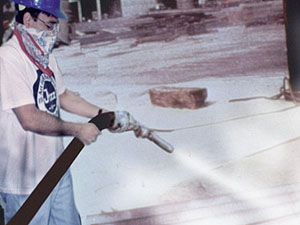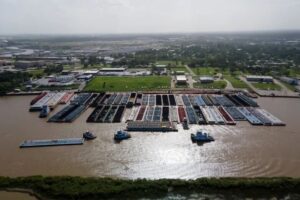It sort of got overlooked in the hubbub over Hurricane Irene and the ongoing coverage of regime change in Libya, but an interesting Bureau of Labor Statistics report out last week is a great springboard for a story about job and workplace safety.
According to the preliminary findings of the National Census of Fatal Occupational Injuries in 2010 (PDF), some of the most dangerous jobs in the U.S. last year included fishing, logging, aircraft work, mining and truck driving.
That’s more or less to be expected as those are high-risk occupations involving dangerous work milieus, speed, or both. Interestingly, though, trash and recycling pick-up workers have a pretty high fatality rate, as do some other unlikely occupational classifications. In 2010, for example, 24 food service managers died on the job, mostly via assault. Ditto for 19 real estate, property or community association managers. Ten zoologists died — in transportation accidents, not via animals gone wild.
The data in this vast report is sliced so many ways, there are myriad stories you could tell, either in career stories focusing on specific jobs and sectors, or by comparing local death and injury rates in key industries to the national tale — and getting experts and regulators to analyze any discrepancy.
The main BLS tables include data by state — in raw numbers (vs. per capita), Texas seems to have the most fatalities — which makes sense given its size and rough-and-tumble industries like oil refining — followed by other large states like California. Tiny states like Delaware and Rhode Island naturally have fewer workplace deaths.
Perhaps more interesting and handy is this five-page PDF that shows deaths by Metropolitan Statistical Area. It raises some interesting questions: Why did three people die on the job in Ann Arbor last year, for example, and five in Pine Bluff, Ark.? Seeking the answers to similar questions in your locality could lead to some interesting and substantive stories about workplace safety investigations that go beyond the numbers.
Another way to keep tabs on workplace safety problems is the U.S. Department of Labor’s OSHA Weekly Report of Fatalities, Catastrophes and Other Events. It seems to be running about a month behind, but reports going back a complete fiscal year offer the actual names and addresses of firms where the deaths took place, along with a brief narrative description of the event.
In July, for example, an amusement ride worker at Carousel LLC in Orlando, Fla. was struck and killed by a ride’s counterweight. A pest control worker in Arkansas died from possible poisoning after spraying a house and in Fulton, Ill. a windmill struck an employee in the head and knocked him into another part of the machinery.
Of course, these incidents likely were reported locally as they happened, unless you’re in a region with so many on-the-job deaths that they don’t make headlines any longer. But taking the time to total up months or years worth of data (which is readily available on the BLS site) might show patterns that employees and employers will be fascinated to read.











